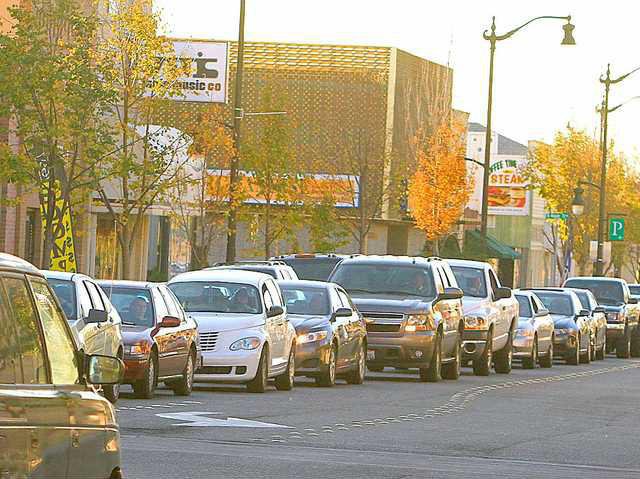Future growth in Manteca will take to the streets differently.
That’s because Manteca has adopted “complete street” standards as mandated under state law. The standards went into effect at the start of 2011.
In a nutshell, the municipal policy means all streets have to safely accommodate bicyclists as well as vehicles plus pedestrians along sidewalks. It also means Manteca will be requiring roundabouts wherever possible to enhance safety and to keep traffic moving.
It doesn’t necessarily mean streets will get wider. What likely will happen is travel lanes instead of being 12 to 14 feet in width will be trimmed down to 10- and 11-foot lanes to accommodate bicyclists. Truck routes, however, will not have reduced lane widths.
The backbone of the concept of complete streets is to take a “more comprehensive approach to mobility planning.” That entails driving, bicycling, walking, and transit riders. Transit stops - essentially turnouts that push the sidewalk back for a short stretch - are among the design elements of complete streets. The turnout increases traffic safety and reduce pollution by not forcing traffic to come to a stop behind buses stopped to load or unload passengers.
The use of roundabouts where there are feasible helps level the playing field, so to speak, at intersections. Typically roundabouts enhance the safety of pedestrians crossing streets as well as that of cyclists. It also reduces another key element of the city’s traffic circulation and general plan that is used as the blue print for growth - air quality. Traffic signals and stop signs lead to more idling as well as stop and go driving that increases air pollution from vehicles. Autos and trucks by far are the single biggest source of air pollution in the valley for greenhouse gases.
The use of roundabouts in enhance air quality also dovetails with the city’s efforts to enhance air quality as required under Assembly Bill 32 more commonly known as greenhouse gas reduction.
A byproduct of roundabouts is a reduction in long-term maintenance costs for the city. Traffic signals have a much higher impact on city spending for long-term maintenance than roundabouts do. The narrow lanes also have a bonus as studies have shown that they help slow down speeds. The striping for the new extension of Atherton Drive that’s almost ready to open between Wellington Avenue and South Main Street employs narrower lanes in a bid to make sure traffic doesn’t speed.
Not all subdivisions that will come on line initially as growth picks up will include complete streets. That’s because they were approved prior to the 2011 street design rules going into effect. One approved project that will have them, however, is the 1,673 unit Trails at Manteca on 477 acres in the southwest portion of the city at the western end of Woodward Avenue was approved last year.
The project makes use of of roundabouts both along Woodward Avenue and near internal parks and schools. There is also transit turnouts planned along Woodward Avenue.
More complete streets on way
Manteca embraces narrower travel lanes, more bicycle lanes




